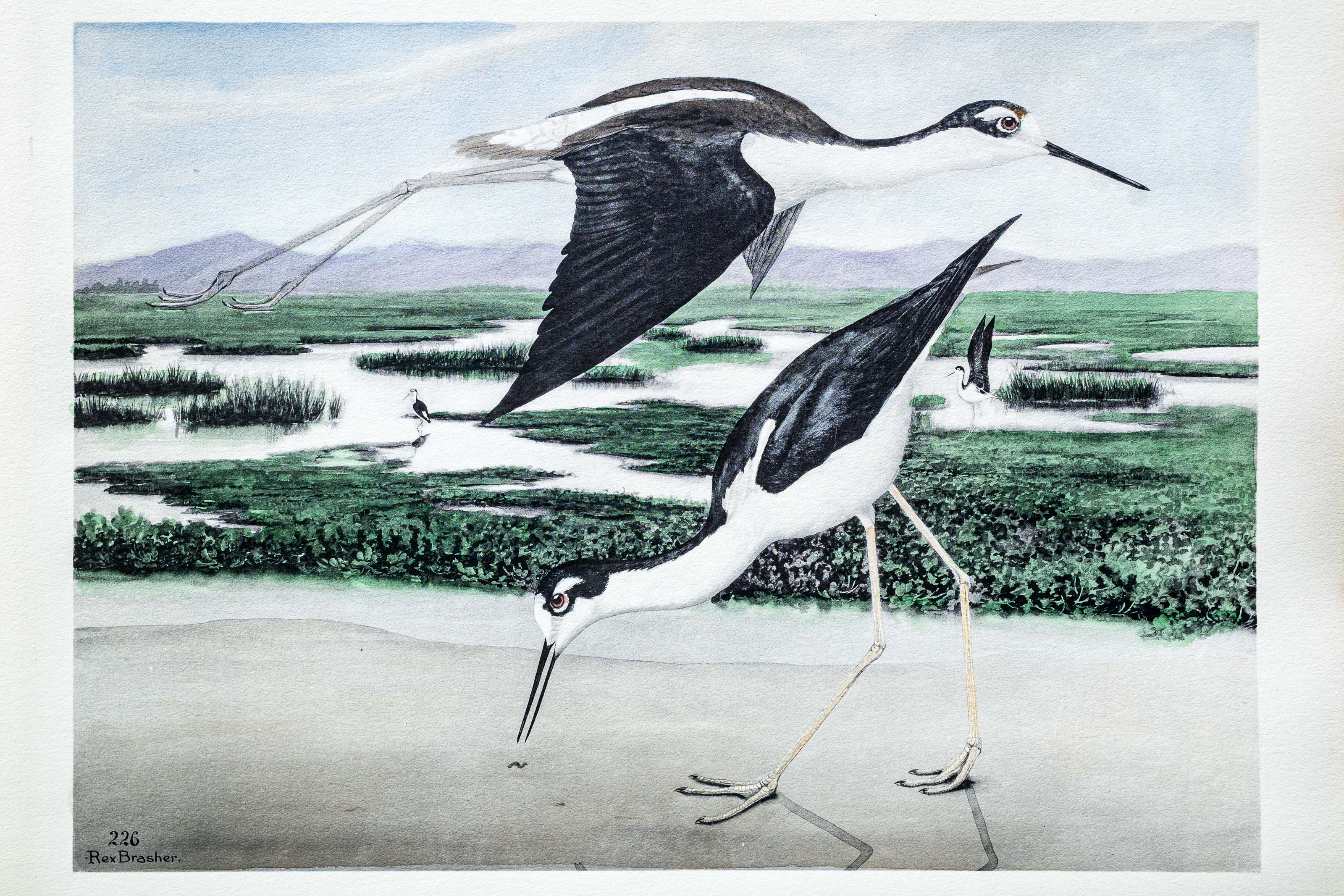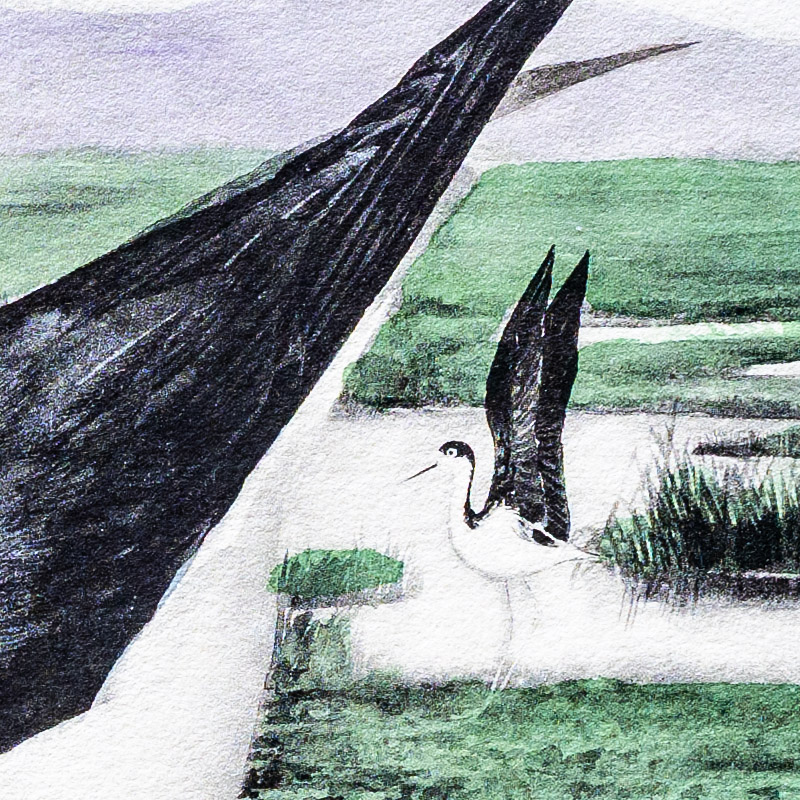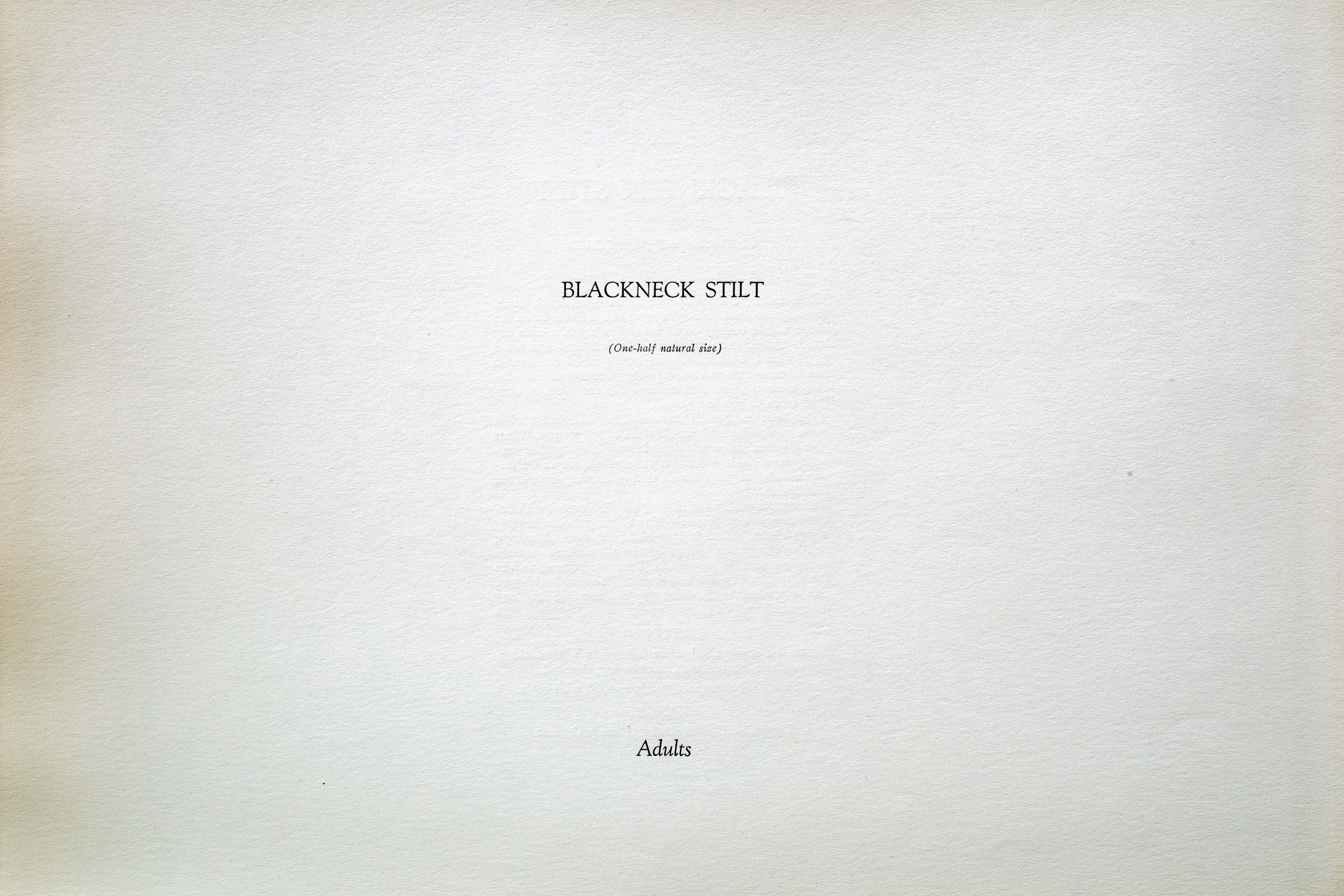






Unknown
1930
4
226
A team of dedicated board members, volunteers, and student interns has published every page in Volume 9. This volume includes 360 images of paintings and lyrical descriptions of birds, now available online for everyone to enjoy anywhere in the world. This is a monumental task. Each volume requires approximately 400 hours to photograph, edit, transcribe, catalog, and publish online. We need your support to complete this work.
If you're tech-savvy, have a good eye, are meticulous with details, and love structured data, please consider volunteering by emailing us at hello@rexbrasher.org.
We encourage all bird lovers and supporters to consider a monetary donation to support our mission to make Rex's work available for everyone. You can provide a one-time or recurring donation online.
While sailing a model yacht on Prospect Park Lake, Brooklyn, when I was eight years old, a STILT lit on the shore within twenty feet. I tried to catch it with my hands and almost succeeded! Years later I saw some in Florida but they are practically gone from former haunts on the eastern coast. They are still common locally around ponds and meadows in the West, preferring fresh to alkaline pools.
Tyler believes that Stilts remain on their nests when cattle approach and sheer them off by bill thrusts. When rising water threatens their homes, they gather any handy material and force it underneath, the entire colony turning to with a will, and often they outwit the inundation.
An intruder within the nesting area is greeted with extraordinary acrobatics: — "Some hang with beating wings above, others bounce along the ground, raising and lowering their wings continually; others assume every conceivable position both on the ground and in the air. These exhibitions require the moral backing of numbers. Isolated birds usually slip away without any demonstration." (Tyler)
NESTS: on dry ground, mere hollows in wet locations, quite elaborate structures, more or less elevated.
EGGS: 4. Dull ochre irregularly spotted with sepia.
Temperate United States. Rare in the east.